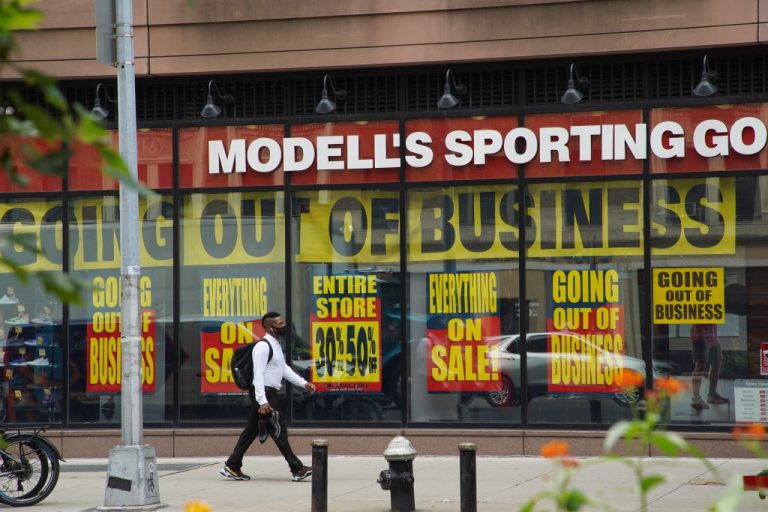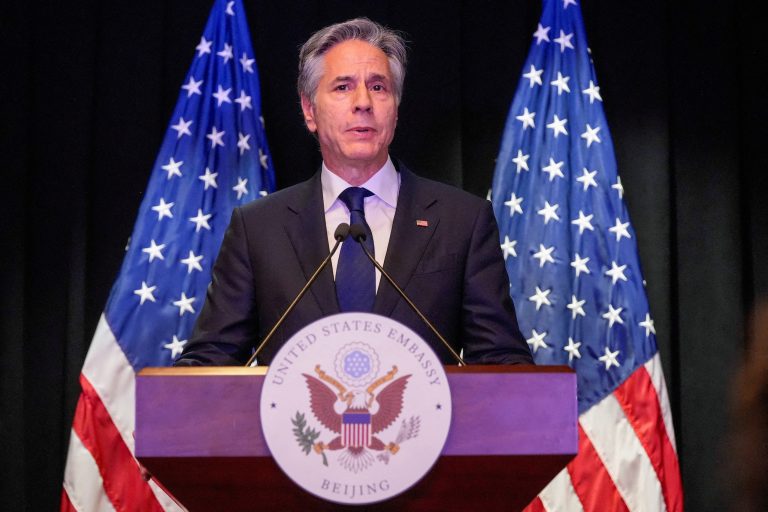Another dark omen for the United States economy is manifesting: small business bankruptcy rates are now higher than they were during the beginning of the COVID-19 pandemic and attendant lockdowns that resulted in forced business closures and demand destruction.
The statistic is published by The Epoch Times based on a note from European megabank UBS the outlet says it viewed, which showed that “the four-week moving average for private filings in late February was 73 percent higher than in June 2020.”
UBS Evidence Labs cited Matthew Mish, Head of Credit Strategy, who called the development “one of the more underappreciated signs of distress in U.S. corporate credit.”
Mish added that the smallest companies are the ones facing “the most severe pressure from rising rates, persistent inflation and slowing growth.”
After the Federal Reserve slashed interest rates from a now-comparatively low 1.75 percent in 2019 to 0.25 percent to stimulate the economy following the crash of the U.S. equities market when COVID began making headlines, the cost of borrowing stayed at historic lows for two straight years.
Success
You are now signed up for our newsletter
Success
Check your email to complete sign up
But when March 2022 rolled around and the economy became twisted by the after effects of inflation caused by the Biden administration’s several multi-trillion dollar spending packages and the reality where low interest rates means banks and big money funds stay away from bonds, instead seeking returns in a stock market that saw the greatest boom in history, the Fed began raising rates, and in a hurry.
From March 2022 to the last Federal Open Market Committee meeting held on March 22, rates have inflated from 0.25 to 5.00 percent.
Although publicity of the consequences of rate hikes have so far been limited, at first to the impact on mortgage holders, and then in 2023 the collapse of one of America’s largest banks, small businesses had so far appeared to be relatively unaffected.
For example, in July, Vision Times calculated that a Canadian variable rate mortgage based on a Bank of Canada interest rate of 2.50 percent at the time had increased from 2.99 percent in 2020 to 5.89 percent, which not only increases payments on a typical $500,000 mortgage by $800 monthly, but doubles the total cost of borrowing.
By January, the BoC had bumped the interest rate to 4.5 percent, and has since paused.
In March, Silicon Valley Bank, in business since the late 1980s and lauded in a 2015 Stanford Business School Case Study for making itself a bridge between the Chinese Communist Party and the U.S. venture capital community, suddenly collapsed after a big money bank run combined with heavy losses on the instruments the firm hedged depositors funds with: U.S. Treasury bonds and mortgage backed securities because bond values decline as interest rates increase.
A recent study researchers from Stanford, Northwestern University, Columbia University, and the University of Southern California found that Silicon Valley Bank’s calamity may go viral because as many as 186 smaller American banks are also similarly at risk of the consequences of mass withdrawals during a public panic scenario.
The UBS note stated that the sectors hardest hit by bankruptcies are real estate, chemicals, retail outlets, and healthcare.
Data published by the American Bankruptcy Institute (ABI) states that there were almost 5,000 more bankruptcies this February than February 2022, an 18 percent increase in a single year.
The Canadian Federation of Independent Business (CFIB) began to publicize the new wave of Canada’s small business bankruptcy epidemic in August 2022, noting, “Official small business bankruptcy numbers have been increasing steadily since the beginning of the year and are currently at a 2-year high.”
The CFIB called the figures “just the tip of the iceberg.”
“54% of businesses are still reporting below-normal revenues and 62% are still carrying unpaid debt taken on during the pandemic, $158,000 on average, according to the latest available estimate,” the organization stated.
Factors implicated in the trouble were calculated to be “the weight of the COVID-related debt businesses were forced to take on to pivot and survive, rising costs on virtually every business expense and a gripping shortage of labour.”
The ABI’s data showed that bankruptcies were going parabolic across all sectors, with an 83 percent increase in Chapter 11, an 18 percent increase in commercial bankruptcies, a 45 percent increase in Subchapter V small business bankruptcies, and an 18 percent increase in individual bankruptcies in February of 2023 compared to the same month one year prior.
March 30 reporting by The Washington Post likewise portended what it called a “bad omen for the US economy” as it described small businesses “facing a tougher time accessing capital, compounding already-tight lending standards and soaring interest rates” in an article chronicling warnings a couple planning to open a Pickleball bar in Florida were given by their financial adviser.
“Matthew, it’s not impossible, but if you’re going do it, do it quickly because we anticipate a small business credit crunch,” the man recalled his banker telling him as they sought a $2.5 million loan in March.
As soon as Silicon Valley Bank collapsed, regional banks started hiking interest rates on loans to “riskier clients,” the article stated.
The Washington Post also cited anecdotes shared from a toy store in Maryland, who has struggled to obtain a marginal $250,000 credit line since the collapse, which they say is a problem not faced in earlier years.
The owner told the paper, “As I go through these crises, this is how they always start…They say ‘it’s fine. It’s contained. It’s just this one industry.’ Then things just go off the rails.”
















